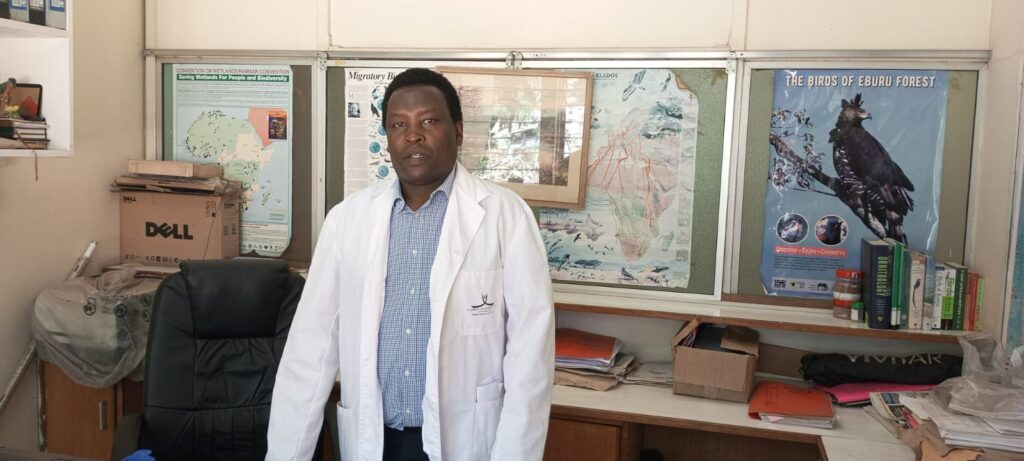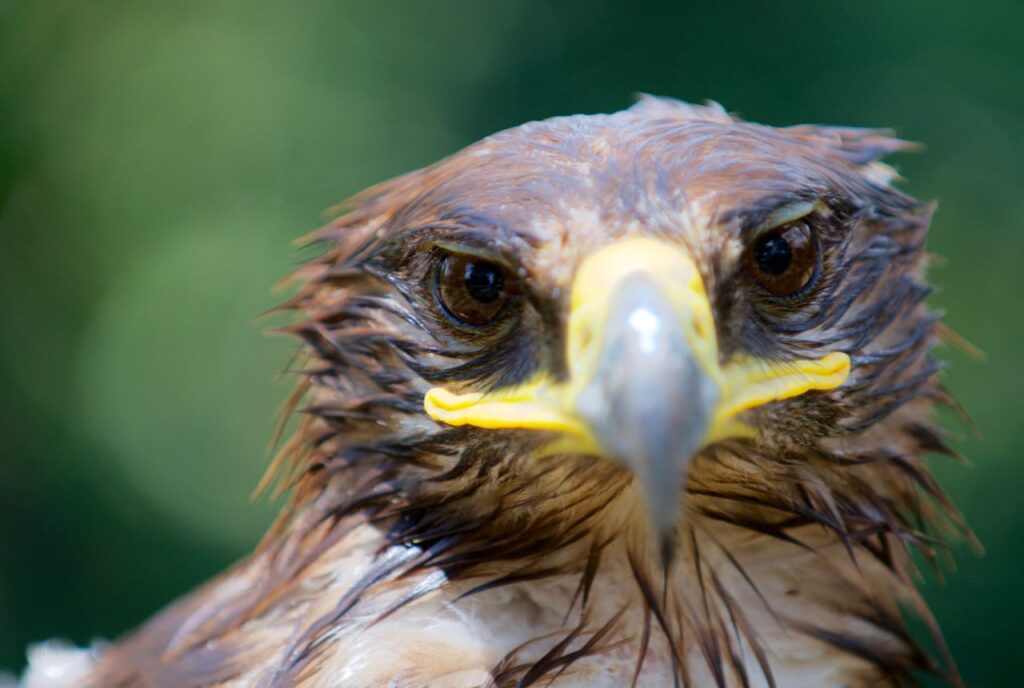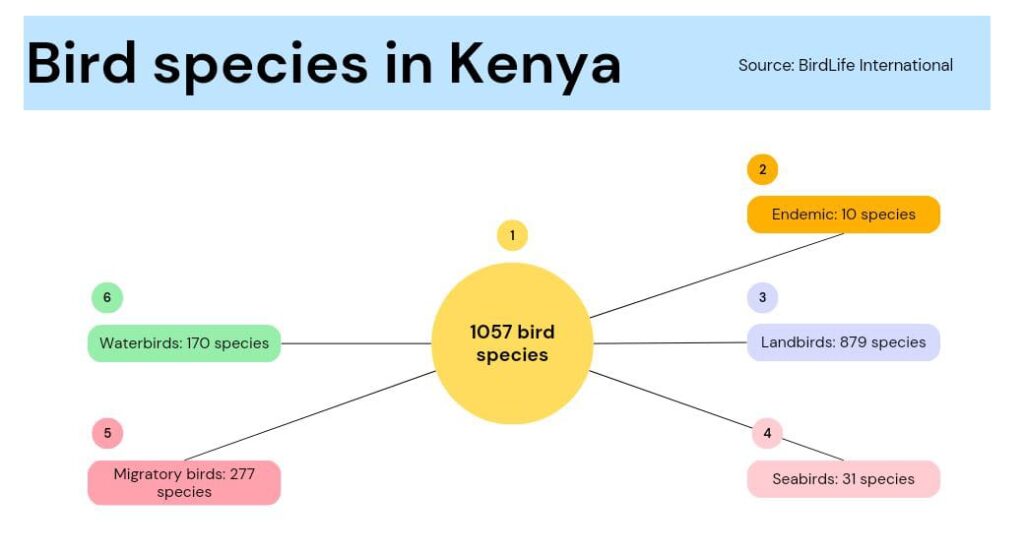By Bernard Muhia and Njoroge Waiganjo
Raptors, the generic name for birds of prey, are hyper-carnivorous bird species that survive by hunting and feeding on other animals. Currently, Kenya has 103 species (including owls) of birds of prey ranging from the tiny Pygmy falcon to the Lappet-faced vulture, which is the largest raptor on the continent.
Birds of prey provide key ecosystem services such as getting rid of disease-causing carcasses. Unfortunately, several species are increasingly exposed to extinction due to several threats, among them electrocution from high voltage transmission lines.

Electrocution
A preliminary assessment in 2010 of the potential risks from electrical infrastructure to large birds in Kenya by Jon Smallie and Munir Z. Virani, established that of approximately 24 relevant bird species that are of conservation concern in Kenya, 17 species (71%) face a high risk of direct interactions with electrical infrastructure. Priority species that get electrocuted include the Egyptian Vulture, White-headed Vulture, Lappet-faced Vulture, Grey-crowned Crane, Lesser Flamingo, White-backed Vulture, Rüppell’s Vulture, Martial Eagle, White Stork, Secretarybird, and various sit-and-wait raptors like Augur Buzzard and Long-crested Eagle.
According to the Kenya Bird of Prey Trust, electrocution kills in a number of ways, first by disrupting and overheating the electrical pathways of the nerves and the brain, shocking the heart, causing muscle contraction or tightening, leading to an inability to let go of the electricity wire (caused by muscle seizure or tightening, worsening the situation), leading to dehydrated tissue and burning of soft muscle tissue as well as major organs. The blood contains hemoglobin (iron) and water which are good conductors of electricity. Bird anatomy allows them to sometimes survive the shock but the muscles and cells die in one leg and the corresponding opposite wing. It takes a few weeks to dry up and the leg and wing fall off. “Due to the lack of statistics, there could be over 5,000 birds dying every year from electrocution.” Says Shiv.

An interview with Forefront Magazine, he said, “Here in Kenya we’ve gone from the slightly safer wooden poles to the absolutely lethal concrete ones”. Says Shiv Kapila, the Director of the Naivasha Raptor Center, which is part of The Kenya Bird of Prey Trust. The concrete poles are fitted with a crossarm and insulators that are placed at the head height of a bird which is one foot tall and the concrete poles have to have metal rebars going through them which usually emerges and exposes at the top and when a bird perches on it, it forms a connection to earth and the minute it wants to fly away, it spreads its wings out, touches the lines and gets electrocuted.

Consequences
“Our policies are even affecting birds from other countries and continents and Kenya is a signatory of the Bonn Convention on Migratory Species.” Says Joseph Edebe, a Senior Research Scientist at the Wildlife Research and Training Institute (WRTI) of the Kenya Wildlife Service (KWS) in Nakuru. Migratory birds come to Kenya from September but most, like flamingos, come in January. They do this to escape the harsh winters in Europe and Asia.
The Convention aims to ensure that African-Eurasian migratory raptor populations achieve favourable conservation status, requiring member states to endeavor to manage and restore raptor sites, habitats and populations, establish training and monitoring programs, and submit a national strategy for globally threatened raptor species.

Solutions
The concrete poles started being used 6-7 years ago and they kill a lot of birds of prey simply by how they are made and their design. They can be made safer by putting molded rubber caps on them. The insulators and lines themselves can hang below the crossarm instead of above it– this is a much more stable configuration as well.
Another model we could borrow is that from the west where they put their power lines underground. This way, the lines need less maintenance and short-circuits are not caused by electrocuted wildlife.

The Future
According to Shiv, the future is not looking good for birds of prey in general unless we completely revolutionize our practices and policies where things like energy infrastructure are concerned and practices around human-wildlife conflict. Human-wildlife conflict is exhibited when man intentionally poisons these birds as a way to stop them from foraging on their crops. “Through education and awareness campaigns, a lot of people are being made aware of poisoning, of electrocution and at least we’re starting to talk about it, which is the first step to actually getting to do something about it.” Says Shiv.
The Kenya Bird of Prey Trust gets on average 2 electrocuted birds a month, and these are the ones that people come across while they are still alive. Wounded birds have been brought in from as far as Masai Mara and Laikipia and the Taita Hills Sanctuary which is over 300 kilometers away. “Because Africa and other developing nations are not financially rich, this may result in cost cutting options that result in minimal tangible safeguards to ensure “safe” powerline configurations that do not kill raptors. The truth is that we can have safe power without electrocuting a single bird for the same cost”. Says Simon Thomsett, the Director of The Kenya Bird of Prey Trust.

There is a need to regulate and reverse raptor decline through consolidated actions like enhanced management of protected areas, mitigation of specific threats and the implementation of species recovery plans. Business-as-usual would mean a bleak future for the raptors and any other species in general unless we have a behavioural change and revolutionize our practices and develop working and implementable policies. “Kenya Power should speak to local communities, conservationists and scientists about the potential problems of those projects and be open to ideas about how to make these power lines and poles safe” says Shiv.
The IUCN Red List
BirdLife International has listed as Critically Endangered in Kenya, the White-headed Vulture, Hooded Vulture, White-backed Vulture, Rüppell’s Vulture and Taita Apalis. Kenya hosts three of the rarest birds: Taita White-eye (endangered), Taita Thrush and Taita Apalis (both of which are critically endangered). In particular, the Taita Apalis is the rarest of them all with only 150 birds remaining globally. It would take a lot of assisted effort for these birds to recover in population numbers. “In the IUCN Red List, it is very hard to downgrade a species from, say, critically endangered to endangered” says Dr. Peter Njoroge, the head of the Ornithology Section at the National Museums of Kenya. He was once involved in helping the Seychelles Magpie-Robin to recover from 80 birds to 300 birds which moved it from critically endangered to endangered.

The challenges that birds of prey face have been identified in a report titled “Evidence of widespread declines in Kenya’s raptor populations over a 40-year period” authored by D. Ogada et al. The report, published in the Biological Conservation Journal, Issue 266 of 2022, lists the challenges as either from natural factors, governance or human induced. Poor governance, especially giving permits to encroach on ecologically sensitive zones is a big threat to our biodiversity.
“It’s high time to give back to nature, we have taken it for granted and surely it doesn’t deserve that. We are not doing this only for us, we are doing it for the people, the community and for our children.” Concludes Sumaiya Harunany, Founder of Blue Earth Organization in Mombasa.

This story was produced with the support of Internews’ Earth Journalism Network.

